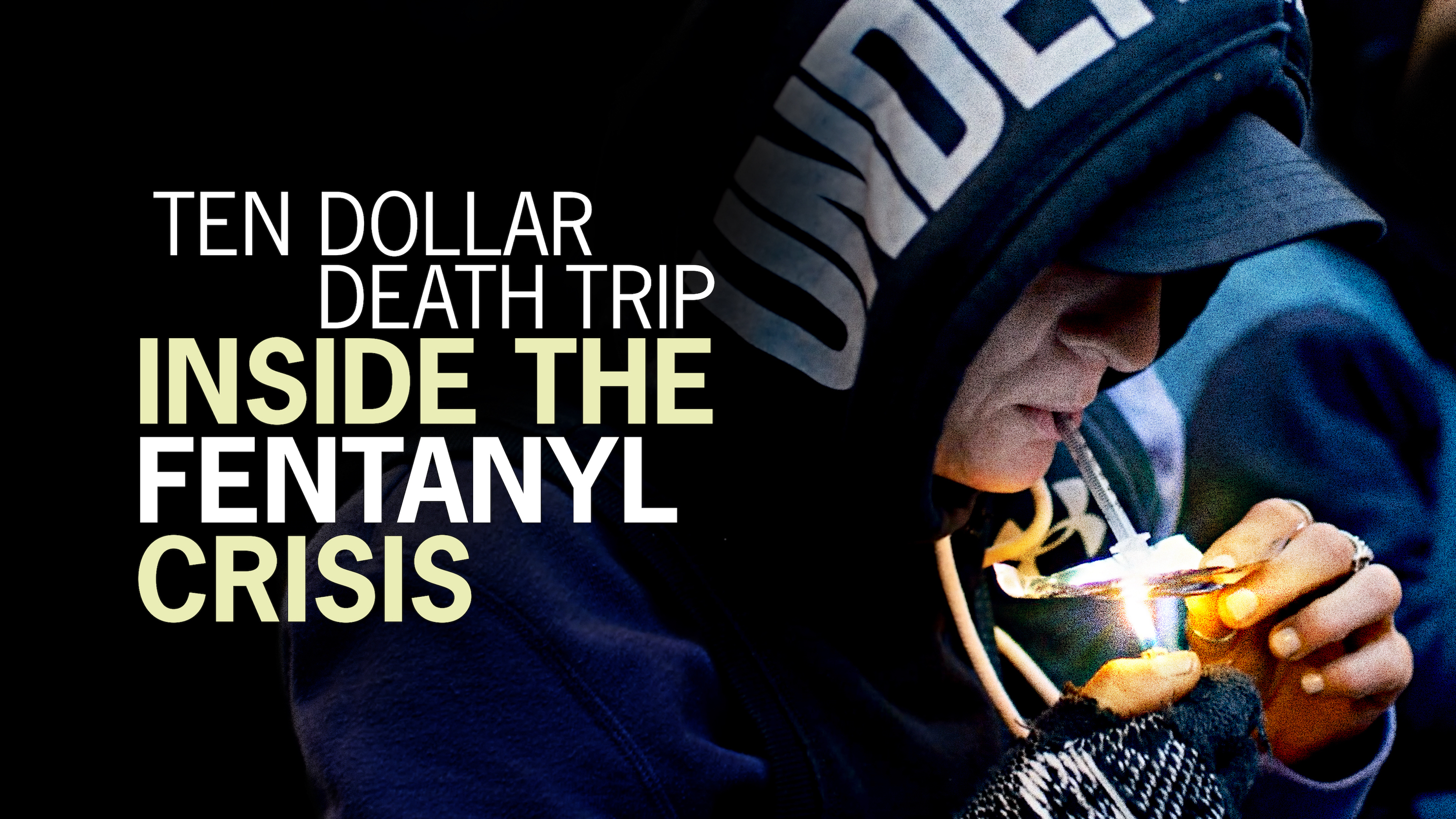Fentanyl has legitimate medical uses, but the illicit use of the highly addictive drug has created an epidemic of addiction, overdose, and death.
◊
First synthesized in 1960, fentanyl was originally developed as an alternative to existing opioid analgesics like morphine. Its quick adoption in medical settings was due to its potency and effectiveness in managing severe pain. However, beginning in the 1980s and ’90s, its use extended beyond medical settings into the “street” drug culture. Illicit production and distribution have become prevalent, resulting in fentanyl-related overdoses and deaths, especially when mixed with other drugs or sold in counterfeit form.
To learn more about fentanyl and its effects on the body, watch Ten Dollar Death Trip: Inside the Fentanyl Crisis.
Pain Relief, Overdose, and Death: How Fentanyl Is Used and Misused
In medical settings, fentanyl is primarily used for managing severe pain, such as post-surgical or chronic pain in patients who are tolerant to other opioids. Under medical supervision, fentanyl can provide effective pain relief with a relatively rapid onset of action.
At low to moderate therapeutic doses, fentanyl binds to opioid receptors in the brain and spinal cord, leading to pain relief, sedation, and euphoria. However, at higher doses, fentanyl’s effects can be much more potent and dangerous. Fentanyl suppresses respiratory function, which can lead to coma or death, especially when combined with substances like alcohol and benzodiazepines such as Xanax or Valium.
Illicit use can easily lead to dependence and addiction. Tolerance develops, meaning that higher and higher doses are required to achieve a “high.” Abrupt cessation can lead to withdrawal symptoms such as anxiety, agitation, and insomnia. On the street, fentanyl is often mixed with other drugs such as heroin and cocaine. According to the CDC, in recent years the illicit use of fentanyl has contributed to a sharp increase in opioid-related overdose deaths.
 Street art with an anti-fentanyl message (Credit: Alan Arsenault, via Pixabay)
Street art with an anti-fentanyl message (Credit: Alan Arsenault, via Pixabay)
But fentanyl use continues to rise, and the question – knowing its harmful effects – is why. One of the answers is that its effects are pleasurable to some users, especially to those seeking relief from physical or emotional pain. The effects, including relaxation, warmth, and contentment, come on rapidly and are felt intensely. However, so do the risks of addiction and overdose. Its continued use poses a significant risk to public health and safety.
Death is its ultimate risk. Fentanyl kills by suppressing respiratory function, leading to slowed and shallow breathing. In its final stages, a fentanyl overdose causes respiratory arrest and, ultimately, a lack of oxygen to vital organs. Understanding the mechanisms of fentanyl overdose and implementing strategies for overdose prevention, such as naloxone distribution and harm reduction programs, are crucial for addressing the ongoing public health crisis associated with opioid misuse and overdose.
Ω


